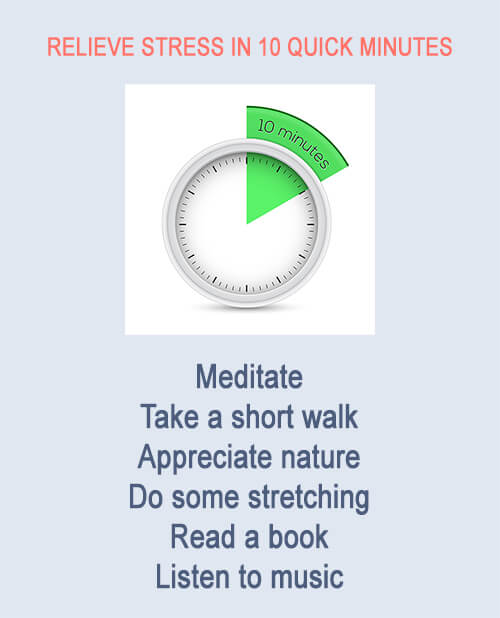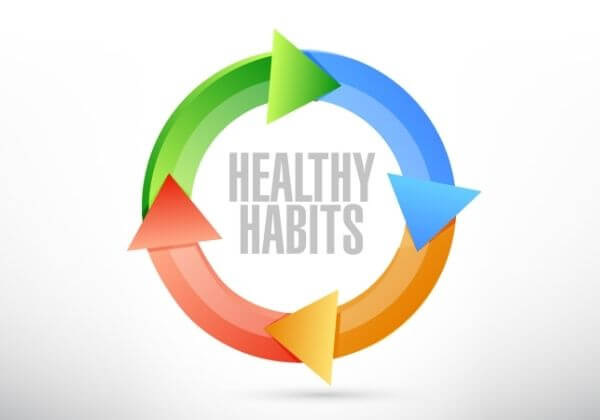It is never too late to start living healthy, and you can learn new habits at any age. Today’s busier lifestyle often leaves us with “fast and easy” options, but these are not doing your long-term health any favors.
More than 80% of Americans do not eat enough fruits and vegetables in their diet, as ‘fast’ processed foods are the more convenient option. The typical American diet that is high in calories, sodium, saturated fats, and sugar has caused an increase in the number of Americans that are overweight. And this is the number one cause of chronic illness in the United States.
Additionally, the CDC reports that too many Americans are currently living sedentary lifestyles, with 60% of adults not getting the recommended amount of physical activity and close to 25% not getting any activity at all. Little to no physical activity combined with an unhealthy diet further increases the risk of poor cardiovascular health by up to 147%.
Those are the facts, and they are scary. But, they can also serve as motivation. By developing healthy nutrition, fitness, and lifestyle habits, you don’t have to be another statistic. That is why we are sharing with you the long-term benefits of living healthy. We hope our guide will give you the inspiration to start today.
Healthy Living Starts With Healthy Habits
♦ Eating Right
♦ Nutrition Evolution
♦ Mindful Eating
♦ Healthy Plate
♦ Moving More
♦ Benefits Of Exercise
♦ Choosing An Exercise
♦ Tips To Keep You Moving
♦ Living Healthy
♦ Mental Wellness
♦ Reduce Stress
♦ Stay Balanced
Eating Right
Nutrition Evolution
Healthier eating habits start with an understanding of nutrition. The body requires approximately 50 different nutrients for healthy growth, maintenance, and repair. These nutrients come from the proteins, carbohydrates, fats, vitamins, minerals, and water that you consume. In order to meet these nutritional requirements, a balanced, high-quality diet is necessary. Sadly, the human diet has evolved in such a way that these requirements are not being met for many Americans.
Our ancestors used to get the majority of their calories and nutrients from vegetation. Today’s typical Western diet is quite the opposite: intake of simple sugars, saturated fats, sodium, and alcohol is much higher. The invention of fast food was designed to cater to our busy lives and introduces processed food, which has quickly replaced the nutrient-rich food the body needs.
You have healthier alternatives!
Try these healthy buddha bowls. You can prep and cook them over the weekend, so they are ready for your weekly meals. Save time and give your body the nutrients and energy it needs.
The nutritional needs of the body have not changed over time, but diets have. It is this change in diets that are contributing to the rising numbers of chronic health problems. One simple way you can reduce the consumption of unhealthy foods and live a healthier lifestyle is by following a nutrient-rich diet.
The Mediterranean diet is one way we recommend you get back on a healthy eating track. And we have some great recipes to help get you started. You can fuel your body with all the nutrients it needs with this diet, which focuses on fresh fruits and vegetables, nuts, seeds, legumes, whole grains, fish, and seafood and limits or removes unhealthy fats, processed and refined foods.
Mindful Eating
In addition to getting the required nutrients, the way you eat is important to overall health and wellbeing. Research has shown that mindful eating may lead to healthful food choices that reduce the risk of chronic diseases, promote more enjoyable meal experiences, and support overall health and psychological wellbeing.
This approach combines mindfulness with nutrition knowledge to help you make healthful food choices. Healthy food choices help promote overall health and reduce your risk of chronic diseases associated with poor eating habits.
7 Simple Steps To Mindful Eating
1. Honor Your Food: Eat without distractions
2. Engage All Your Senses: Take note of the textures, smells, and tastes
3. Modest Portions: Avoid overeating by using a plate no bigger than 9 inches in diameter.
4. Eat Slowly: Eating slowly allows you to recognize when you are full so that you can stop before you overload your digestive system.
5. Small Bites: This helps to slow down eating, improving digestion and allowing you to fully appreciate flavor.
6. Don’t Skip: Missing a meal increases hunger and can lead you to grab a quick option which is not always the healthiest option.
7. Go Green: Eat a plant-based diet as much as possible for better health. (Bonus points for protecting the environment as animal-based food production takes a heavier toll on the Earth).
Healthy Plate
A balanced and nutritious diet is essential for every stage of life, and you can change your eating habits at any time for overall health benefits. Having variety on every plate keeps your meals interesting and ensures you get the nutrients you need. Our healthy eating plate and these delicious anti-inflammatory recipes are easy ways to start creating healthier eating habits.
A healthy plate should include:

Limit milk and dairy? But what if you have concerns about bone health and are worried about cutting back on these foods, which are common sources of calcium and vitamin D. Don’t worry, we have you covered. There are other ways to get these essential bone health nutrients, starting with these delicious recipes.
Unhealthy food is all around you, and it can be tempting. But, the satisfaction from eating these foods is only temporary, and you are in this for the long run. Your long-term health will benefit from an understanding of healthy nutrition, mindful eating, and a balanced plate. And we are here to help you, and these dietary tips will be the first step to creating your healthy habits for a healthier and happier life.
Moving More
Benefits of Exercise
There is a scary trend of reduced physical activity in the United States. The cause is often attributed to reduced high-activity occupations while low-activity jobs continue to rise. Additionally, more people drive cars today, and walking or cycling to work has decreased. The result of this inactivity has been an increased incidence of obesity and sedentary living. Even if your job involves desk work, healthy living can still be part of your routine.

Research shows that just two minutes of physical activity for every hour of sitting can help lower the risk of premature death by up to 33%. Exercise does more than just help with weight management; it plays an essential role in the well-being of the body. Regular exercise benefits a range of physical and mental health conditions for people of all ages.
♦ Healthy weight management
♦ Reduced risk of heart disease
♦ Proper bone, muscle, and joint function
♦ Healthy cognitive function and mood
♦ Restful sleep
♦ Improved energy levels
Busy lifestyles and easy access to convenience foods have encouraged a sedentary lifestyle, and exercise has become a low priority for many. But it is important to remember that some exercise is better than none. Just about everyone can participate in some form of exercise safely, and we want to help you make fitness a priority and a regular part of your daily routine.
Choosing An Exercise
All exercises offer health benefits, and performing different types of exercises can expand the range of benefits even further. When creating healthy fitness habits, it is important to be consistent. Choose an activity and routine that you can stick with. This means choosing an activity that fits best with your schedule and current level of fitness.
Consider how often you can do the activity and how long each session will last. Start small, so you don’t get burned out. A 30-minute session 2 or 3 times a week is a great place to start. As your fitness levels improve, you can extend sessions, add more days, and alternate activity types. It is also important to match the intensity level to your fitness level. If this is the start of your fitness plan, then start with light to moderate intensity.
The next step is finding the right activity for you. The most common and beneficial forms of fitness include:
Cardiovascular activity: These are aerobic activities that help maintain proper heart function and lung fitness by promoting healthy circulation through the body. These activities also engage multiple muscle and joint systems, providing all-over body exercise.
Examples: walking, jogging, bicycling, swimming, dancing, or sports such as basketball, tennis, or soccer.
For individuals just starting on a new fitness path, we recommend the 21-Day Walking Challenge. It is a great way to establish a routine and to introduce your body to regular fitness.

Research also shows that cardio activity is beneficial for your gut too. Increased blood flow to the digestive tract stimulates proper digestion and nutrient absorption, so your body can benefit from those new nutritious meals you are eating. And, we just so happen to have the best exercises for your gut too!
Resistance training: These activities are designed to strengthen your musculoskeletal system and are particularly beneficial for individuals with bone or joint conditions. With regular training, you can maintain or increase muscle strength, endurance, and power.
Examples: resistance bands, weight machines, free weights, Pilates, and daily activities of living such as laundry, climbing stairs.
For individuals who experience regular joint discomfort, these exercises are ideal for strengthening joints muscles to improve mobility. There is no need to worry about pain because we have ten exercises that are gentle on your joints.
Flexibility training: The goal is to stretch and lengthen muscles for improved range of motion and flexibility. Holding poses for a few seconds helps increase elasticity, and by improving flexibility, you can enhance your overall physical performance.
Examples: Yoga, Tai chi, pilates, stretching
Yoga and Tai chi have long been used to support both physical and mental health and can be performed any time of day. You can even fit a few poses in during your breaks at work, starting with these popular yoga positions.
Tips To Keep You Moving
Commitment and consistency are critical to fitness success. Just as our mindful eating and healthy plates can help guide your nutrition habits, we have helpful tips to make sure you keep moving too.
Tips To Keep You Moving
1. Make a plan: Set aside a specific time in your schedule for exercise
2. Count steps: Apps to count steps are a great way to remind yourself to get up and move. Motivation increases as you complete each goal you set yourself.
3. Keep it brisk: Anytime you walk, make it brisk. Burn more calories and encourage circulation by stepping up your pace a little.
4. Unplug: Set aside devices or turn them off for an hour or two each day. You will find that you naturally get up and move around more.
5. Sit time can be fit time: Instead of sitting to watch TV, do some jumping jacks, squats, or jog in place.
6. Office moving: If you have a desk job, find places to add a little fitness. Use stairs instead of elevators and set reminders to get up and walk around for five minutes every hour or so.
7. Split it up: To get 30 minutes of activity a day, you can split sessions up. Instead, do two 15-minute workouts. This is especially beneficial if you have a busy schedule and limited break time.
8. Accountability helps: Have a friend exercise with you. This keeps you both motivated and on track.
One of the most important things to remember is that creating a new fitness routine takes time and dedication. So be sure to reward yourself. Set short-term goals that you can achieve and then reward yourself when you get there. Treat yourself to a new book, a massage, or some new exercise gear. Then set new goals and go after those!
Living Healthy
Mental Wellness
One of the most significant factors affecting mental wellness is stress. Stress is a common problem in most societies, caused by both acute (an argument or being stuck in traffic) and chronic (unemployment or family conflict) situations. The body reacts to stress physically, so when chronic, it becomes a contributing factor to chronic disease.
Both acute and chronic stressors cause the “fight-or-flight” response, which releases hormones that trigger certain physiological events.
♦ Increased rate of blood and oxygen pumped to cells
♦ Accelerated heart rate
♦ Increasing mental alertness
♦ Reduced digestive activity
While these actions were originally designed to prompt a quick response to danger, elevated hormone levels can increase the risk of chronic health problems. It becomes important in your busy life to learn to control these hormones, and you can do this with a few easy stress-relieving habits.
Promoting mental wellness in your life is vital for physical health. Mind and body are closely linked, with the health of one significantly affecting the other. It is important to incorporate proper food and regular activity in your routine as nutrients and proper blood flow are essential for optimal brain function.
Our healthy plate and a daily exercise plan will help you support mental health as well as the body. In addition to this, you can make yourself a daily checklist of activities that support your mental well-being. By completing at least two or three each day, you will notice mood improvement, and your mental health will benefit.
Tips To Keep You Moving
✔Express Gratitude: The easiest way to do this each day is to start a journal and write down three things you are grateful for.
✔ Get Outside: Do your daily physical activity outside or just take a five-minute break to get some fresh air. Sun exposure stimulates the release of serotonin from the brain, your natural mood-enhancer.
✔ Do Something Nice:Studies revealed that something as simple as holding the door for another leads to an overall positive mood. Give a random compliment, a smile and say hi to a stranger, or help a colleague. Any nice gesture will go a long way for your mental health.
✔ Sit Up Straight: Sitting up straight at your desk, at home, and in the car promotes positive emotions, whereas slouching creates sluggish behavior, which is linked to poor cognition and mood.
✔ Laugh: Laughter is the best medicine as it is linked to positive mood, enhanced learning, and reduced stress levels. Tell a joke or share a funny story and just laugh your way to better mental health.
✔ Learn Something New: Never trying new things can lead you to a rut, so continue to learn and continue to grow. Pick up a new hobby, read a new book, or go to a new place. Just keep learning, so you can keep living.
The more positive you are, the more positive your choices will be, which can only mean healthier living.
Reduce Stress
Stress affects you mentally and physically. It also affects your eating habits. Living with chronic stress can contribute to unhealthy eating, which increases your risk of chronic disease. By reducing stress in your life with healthy habits, you support mental health and physical health by managing harmful hormones and supporting healthier food choices.
With stress being a common element of today’s society, it can be challenging to avoid it. It turns out that avoidance is almost impossible. You can control stress and its effects on your body, and we have 9 great ways to start reducing stress now.
Take back control of your life by managing stress and enjoy the lifelong health benefits coming your way.
♦ Better sleep
♦ Optimal digestion
♦ Healthier nutrition
♦ Less joint discomfort
♦ Lower blood pressure
♦ Improved immune system function
♦ Clearer mental focus
♦ Better mood
In addition to diet and exercise, there are other things you can do to reduce stress in your lifestyle, even if your days are always busy. It only takes ten minutes!

It is important to make time for yourself and for activities you love. Step away from your daily responsibilities every now and then. When stress is removed from your routine, you can live a healthier and happier life.
One of the best ways to lower stress and relax both mind and body is through proper breathing. Breathing is unconscious, but when you pay attention to it, the benefits can be amazing. Deep breathing is one of the best ways to lower stress because when you breathe deeply, it sends a message to your brain to calm down and relax. The brain then sends this message to your body.
Breathing exercises are a good way to relax, reduce tension, and relieve stress, and they are easy to learn. You can do these exercises whenever you want, wherever you want, and you don't need any special tools or equipment. The top 3 breathing exercises are right here, so you can make deep breathing a habit in your new healthy living routine.
Stay Balanced
In the same way that you are creating healthy eating and regular exercise habits, you want to create healthy living habits. The best way to incorporate mental wellness into your routine is by managing stress and by staying balanced. Balance comes with a routine.
With just a little planning, you will have the perfect healthy living routine that includes the right nutrition, the best exercise, and mental clarity.
♦ Plan your meals in advance to open up more time during the week. This extra time is perfect for some regular physical activity and some quiet time. In many cases, exercises like yoga and Tai chi take care of your day’s exercise and mental wellness activities.
♦ Wake up early to give yourself extra time in the day. Starting with a glass of water gets you hydrated and sets your metabolism in motion.

♦ Set time for meditation or mindfulness. 15 minutes a day set aside for meditation and quiet reflection helps clear the mind. This is best done in the morning to set your focus for the day or at night to clear your mind before sleep. One of the best forms of meditation is deep breathing, and here’s why.
♦ Balance work and play. If you have vacation time, use it. Take breaks throughout your day, setting a timer if necessary to remind yourself. Stepping away from work for even 10 minutes can reduce stress, promote productivity, and promote mental wellbeing.
♦ Get outside as often as you can. Ten minute breaks during the day and lunch can be spent either eating outside or taking a short walk. The fresh air will do wonders for both mind and body.
♦ Schedule time for fun and hobbies at least once a week. Time for your favorite activities helps reduce stress, so go gardening, grab a book, dance to your favorite tunes, get a massage, go hiking, or cook your favorite recipe.
♦ Create a bedtime ritual so you go to bed at the same time every night. Stop eating three hours before bed and turn off electronics an hour before. Make sure your room is dark and at a comfortable temperature. If needed, read a book or take a hot bath to help promote relaxation and sleepiness.
Research shows that it takes an average of 66 days to develop a habit. With our simple healthy nutrition, fitness, and lifestyle habits, it will only be 66 days until they are part of your life. And a lifetime of healthy, happy days will be your reward!






